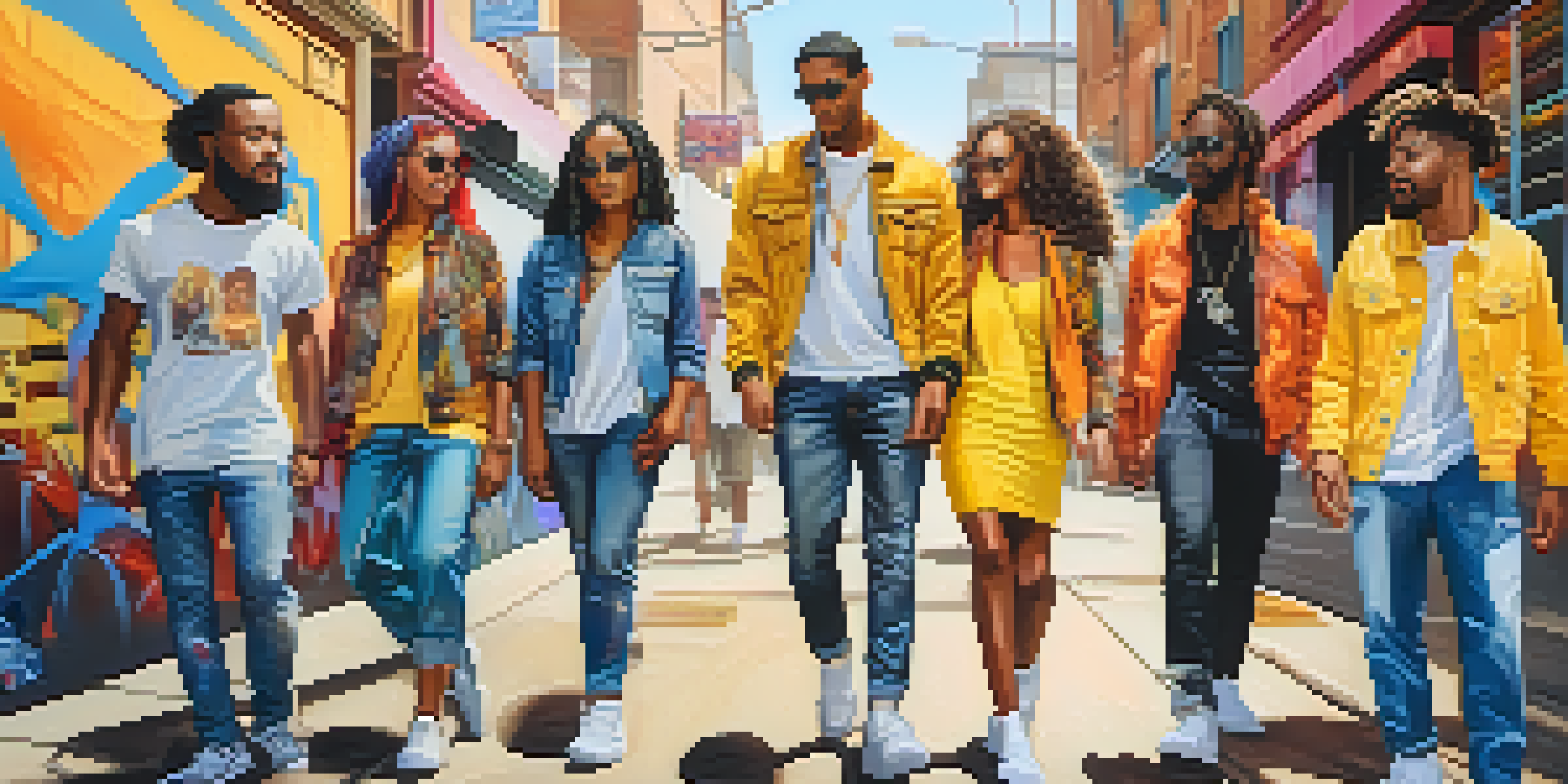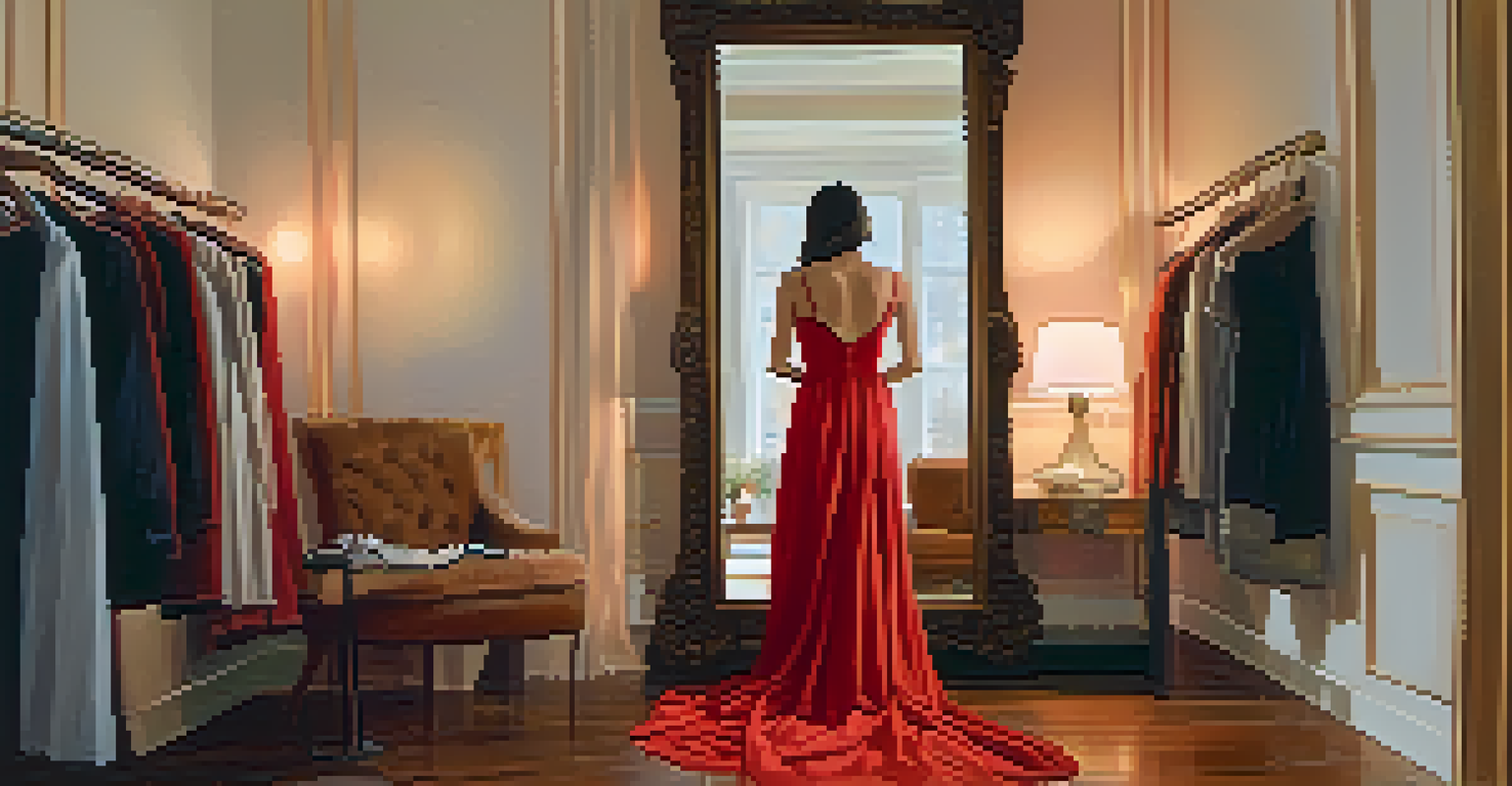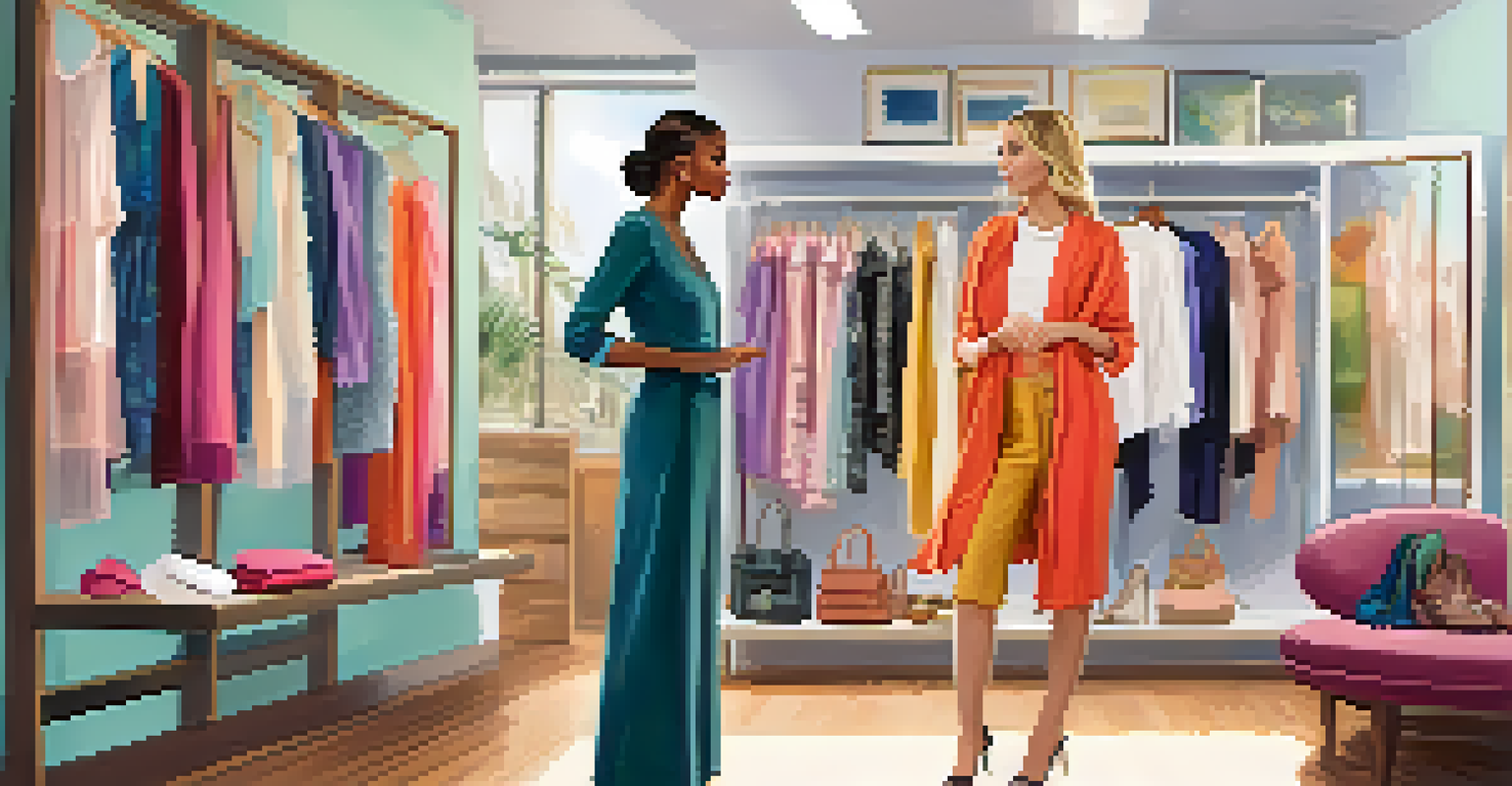Exploring How Fashion Choices Impact Mental Health Positively

Fashion as a Form of Self-Expression and Identity
Fashion allows individuals to express their unique personalities and identities. When people wear clothes that resonate with their sense of self, it can boost their confidence and make them feel more authentic. Just think about the last time you wore an outfit that truly reflected who you are; that feeling of comfort and confidence can have a lasting positive effect on your mood.
Fashion is the armor to survive the reality of everyday life.
For many, choosing an outfit is akin to creating a visual language that communicates their feelings and values to the world. This act of self-expression can be incredibly liberating, providing an opportunity to showcase creativity and individuality. When individuals feel seen and understood through their clothing choices, it fosters a sense of belonging and acceptance.
Moreover, embracing personal style can help in navigating social situations. When you feel good in what you wear, it often translates to more positive interactions with others. This connection between self-expression and social engagement illustrates how fashion can serve as a bridge to improved mental well-being.
The Psychological Effects of Dressing Well
Dressing well can significantly impact one’s mental state. Research shows that people who take care in their appearance often feel more positive and empowered. This phenomenon is sometimes referred to as 'enclothed cognition,' where the clothing you wear influences your psychological processes.

When you put effort into your outfit, it can instill a sense of purpose and motivation for the day ahead. For instance, wearing a smart outfit for a job interview not only helps you look professional but also enhances your self-assurance. That boost of confidence can be crucial in high-pressure situations, ultimately contributing to better outcomes.
Fashion Boosts Self-Expression
Fashion allows individuals to express their unique identities, enhancing confidence and fostering a sense of belonging.
Additionally, the act of getting dressed can serve as a daily ritual that signals the start of a productive day. By establishing a routine that includes dressing well, individuals may find themselves more focused and ready to tackle challenges, leading to a more positive mindset overall.
Color Psychology and Its Impact on Mood
Colors play a powerful role in fashion and can significantly affect our emotions. For example, wearing bright colors like yellow or orange can evoke feelings of happiness and energy, while cooler tones like blue or green often promote calmness and tranquility. By consciously choosing colors that uplift or soothe, individuals can harness the psychological benefits of color in their daily wardrobes.
Style is a way to say who you are without having to speak.
This understanding of color psychology allows people to tailor their outfits to match their desired emotional state. If someone is feeling anxious, opting for soothing colors can help ease their mind. Conversely, wearing vibrant colors on a gloomy day can serve as a mood booster, transforming not just how one feels, but also how they interact with the world.
Moreover, experimenting with colors can be a fun and creative way to explore emotions. As individuals play with different shades and styles, they can gain insights into their feelings, making fashion not just a choice, but also a tool for emotional exploration and growth.
The Role of Fashion in Building Community
Fashion has the remarkable ability to bring people together, fostering a sense of community. From shared interests in specific styles to attending fashion events, these experiences can create bonds among individuals. When people connect over their love for fashion, it can lead to friendships and support networks that positively impact mental health.
Participating in fashion-related activities, such as clothing swaps or fashion shows, can also enhance social interactions. These events provide opportunities for individuals to engage with others, share their passion, and learn from one another. This sense of belonging can be incredibly comforting, especially for those who may feel isolated.
Dressing Well Improves Well-Being
Taking care in one's appearance can lead to positive psychological effects, increasing motivation and focus throughout the day.
Additionally, communities centered around fashion can promote inclusivity and diversity. By celebrating different styles and cultures, these communities empower individuals to embrace their uniqueness, reinforcing the idea that everyone has a place in the fashion world.
Fashion Therapy: A Growing Trend
Fashion therapy is an emerging field that combines fashion and mental health. Therapists may use clothing choices as a means of exploring emotions and self-image. By discussing how individuals feel in certain outfits, clients can gain insights into their self-esteem and mental well-being.
This innovative approach highlights the therapeutic potential of fashion. For instance, a therapist might encourage a client to wear bright colors or experiment with new styles to boost their mood. Such exercises can lead to breakthroughs in understanding one's self-perception and emotional state.
Moreover, fashion therapy can be particularly beneficial for those recovering from trauma or struggling with mental health issues. By exploring the connection between clothing and identity, individuals can reclaim their sense of self and build confidence in their choices.
Fashion as a Tool for Mindfulness
Mindfulness is all about being present and aware, and fashion can play a role in this practice. When individuals take the time to thoughtfully select their outfits, they engage in a mindful activity that encourages self-reflection. This process can help ground them, fostering a sense of calm and clarity.
Choosing what to wear can also be an opportunity to connect with one's body and emotions. By paying attention to how certain fabrics or styles make them feel, individuals can develop a deeper understanding of their preferences and needs. This awareness can lead to improved body image and self-acceptance.
Color Choices Affect Emotions
The colors we wear can significantly influence our mood and interactions, making conscious color selection a powerful tool for emotional well-being.
Additionally, incorporating mindfulness into fashion choices can extend beyond daily outfits. For instance, individuals might choose to support sustainable or ethical brands, which can enhance feelings of responsibility and connection to the larger community. This mindful approach to fashion reinforces the idea that what we wear can be an extension of our values and beliefs.
The Importance of Personal Style and Confidence
Personal style is a reflection of who we are, and embracing it can significantly boost confidence. When individuals understand and appreciate their unique aesthetic, they are more likely to feel comfortable in their own skin. This confidence can have a ripple effect, positively influencing various aspects of their lives.
Moreover, cultivating personal style is a journey that encourages self-discovery. As people experiment with different looks, they may uncover new facets of their identity, leading to greater self-acceptance. This journey can be empowering, especially for those who have struggled with body image or self-esteem issues.

Ultimately, the confidence gained from embracing personal style can translate into many areas, from career advancement to social interactions. When individuals feel good in what they wear, they’re more likely to take risks and pursue opportunities, further enhancing their mental well-being.